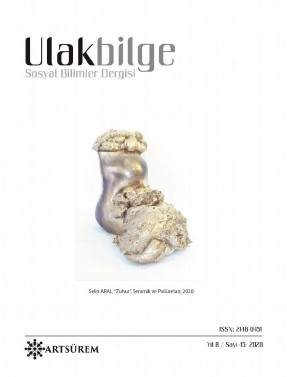EVRENSEL SOKAK ÇOCUK OYUNLARI: PİETER BRUEGEL’İN “ÇOCUKLARIN OYUNLARI” ESERİ ÜZERİNE
UNIVERSAL STREET CHILDREN GAMES: SOME REMARKS ON PIETER BRUEGEL'S CHILDREN GAMES
Author(s): Emre Şen, Birsen KÜPELİSubject(s): Cultural history, Visual Arts, Social history, 16th Century, History of Art
Published by: Sanat ve Dil Araştırmaları Enstitüsü
Keywords: Tradition; universal; Bruegel; Children Games; paint;
Summary/Abstract: The article is about a 460-year-old fairy-tale picture called “Children's Games”, chosen from the everyday life of the 16th century Holland and being immortalized by the brush of Pieter Bruegel. Interpreting Bruegel's piece of Children's Games, which tells the social and traditional life of the Flemish people through a game of humor and children's games, has led me to enter into a huge and adventurous labyrinth. Bruegel is the name that comes to mind when it comes to children and theme in art. This study is very important in terms of the variety of games it offers and the fact that it collects all of these games in the same stage and reflects the culture of its age. The striking beauty and originality of the artwork is to re-explain the natural order in children's games. The artist depicts order and hierarchy from his point of view. It's a picture of his genius, even when we're working on things that we call the most insignificant. In this work which combines the daily life of the people and the universal children's plays to the present in a theatrical language and the variety of games it presents, and the audience collects all of these games in the same stage, when the traditions combined with Bruegel's genius added a masterpiece to the art of painting. It was a great pleasure to examine a joyful, exuberant, rhythmic and such magnificent piece of work accompanied by the messages of the games played in the world of these little adults. In this study, various sources were used through library scans. The works written in previous years related to the artist and his work have been examined and the works have been tried to be read from the internet pages and articles. By using the elements and symbols on the artwork, the daily life elements which are the subjects of the period and the life are examined and the meanings such as the clothes, the accessories used and the places have been deduced. The socio-economic structure of the period in which Bruegel lived was tried to be analyzed.
Journal: Ulakbilge Sosyal Bilimler Dergisi
- Issue Year: 8/2020
- Issue No: 45
- Page Range: 200-213
- Page Count: 14
- Language: Turkish

